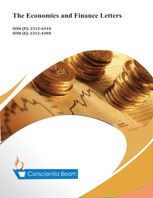An analysis of the government revenue–expenditure nexus: A wavelet approach for the Romanian case
DOI:
https://doi.org/10.18488/29.v10i1.3299Abstract
The turbulent economic environment of the last decades, the social effects associated with the responsibilities of the state to support the development of the green economy, and the increase of involvement in sustainable social inclusion make it necessary to increase budget revenues. Evaluating the link between government revenues and expenditures is a complex approach defined by several factors related to tax compliance and the perception of the efficiency of the expenditure. In addition, recent endogenous and exogenous shocks have considerably influenced the fundamentals of long-term fiscal policy and budget balancing. The type of relationship between government revenue and expenditure is analyzed to identify the leading and lagging variables, and the wavelet approach and monthly data for Romania for 2000–2021 are used. In various periods, the revenue led the expenditure, or vice versa. The spend–tax and tax–spend hypotheses are confirmed for different periods. The analysis highlights the intervals of behavioral asymmetry, which helps to monitor the implementation of fiscal policy. Also, the results could represent a starting point for outlining measures in the fiscal policy area.

